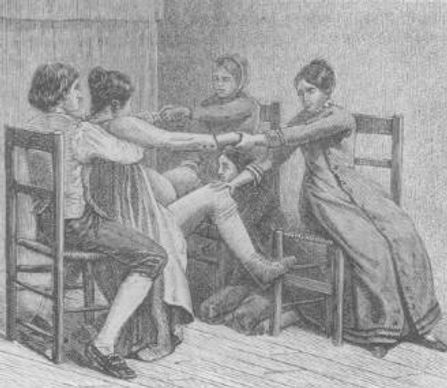Infant Mortality in 19th Century Britain
A Working-Class Problem and a Public Health Solution

An alarming increase in infant mortality accompanied the turn of the 19th century in Great Britain. After one hundred years of decline in infant mortality rates, and a noteworthy increase in overall life expectancy, this sudden shift in population statistics is striking. Levels of infant death reached as high as 200-300 deaths per 1,000 live births in England during the 19th century (Millward & Bell, 2001).
These high numbers are especially concerning when you consider that "between 1801 and 1851 the population of England approximately doubled, from 9 Million to 18 Million people." (statistics.gov.uk) While the general population trend appeared to be going in a positive direction, infant mortality was doing just the opposite.
Statistics

Census Data
The Parliament of Great Britain created the first census in England through the Population Act of 1800, which called for the compilation of population data in England, Scotland and Wales. The census was carried out first in 1801, then every ten years thereafter. In the span of the 19th century, the English population went from just under 10 million to over 30 million. This information is extremely significant in the study of infant mortality, especially when the two trends move in opposite directions.
Population of England on Census Day, 1801-2001
(Jeffries, 2005)

Census entry for British citizen John Birdseye in 1871
(acenstry.co.uk)
The Rise and Decline of Infant Mortality in Britain: By the Numbers
The Rise
Infant mortality rates as a whole rose from 1820-1910. While limited data exist for infant mortality rates at the beginning of the 19th century, from the 1850's onward there are ample statistical reports that demonstrate this sudden increase.
1879: 135 deaths per 1,000 live births = 13.5%
1886: 149 deaths per 1,000 live births = 14.9%
1893: 159 deaths per 1,000 live births = 15.9%
1899: 163 deaths per 1,000 live births = 16.3%
(Findlay, 2006)

"19th century birth, with husbands and attendants"
"At the end of the century infant deaths accounted for fully one-quarter of all the deaths in the nation"
- Mary Lyndon Shanley
A Question of Legitimacy
There is a noticable difference between infant mortality rates between infants born inside and outside of wedlock. "Mortality statistics reflected the high risks associated with out-of-wedlock births," (Shanley 87) presumably due to the social contingencies that urged women not to publicize an illigetimate birth by going to a hospital or seeking medical treatment if needed.
The Decline

Britain did eventually see a decline in the infant mortality rate after its peak around 1900. While the rise of infant mortality in Britain gradually increased over the 19th century, the decline was almost instantaneous, dropping nearly one-third in only ten years. The public health legislation that came out of the end of the 19th century played a huge role in these efforts, as well as the rising status of women in European society.
British Infant Mortality 1840-1910
